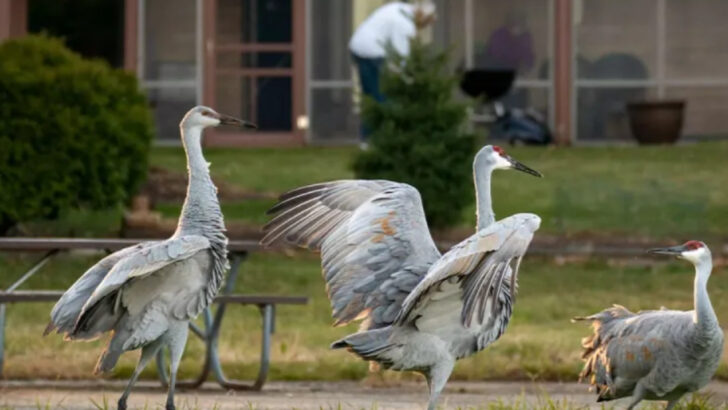Sandhill cranes don’t just migrate—they make an entrance.
These towering, trumpet-voiced birds are showing up in places that would leave even seasoned birders blinking in disbelief. Think golf courses, construction zones, even parking lots—what on earth are they doing there?
Turns out, cranes aren’t too picky when it comes to staking a claim.
As long as there’s open ground and a decent snack, they’re in. And their choices are getting weirder by the season.
Get ready to explore 9 oddball spots where these elegant giants have decided to flock, strut, and surprise. It’s a strange, squawking world out there.
Urban Rooftops
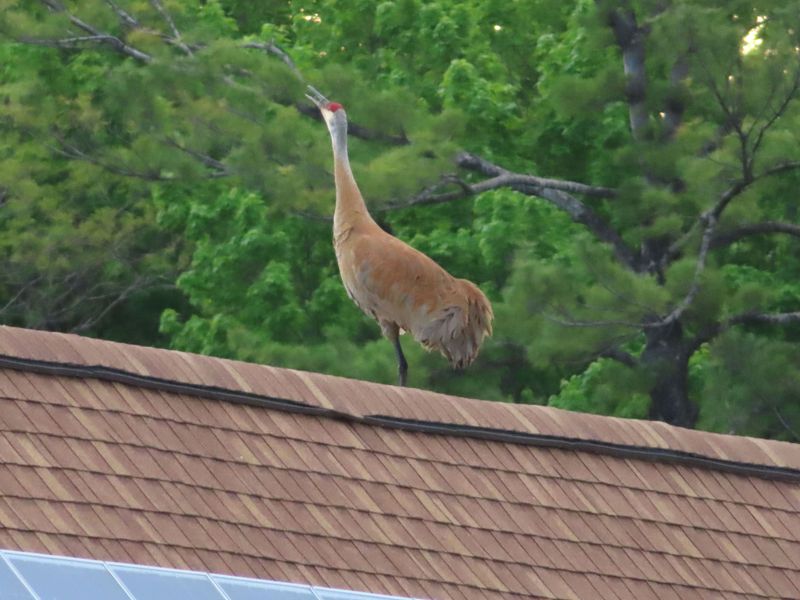
In bustling urban environments, the sight of Sandhill Cranes perched atop city rooftops has become a captivating anomaly. These birds, typically accustomed to wide-open spaces, have adapted to urban settings, often seen against sunset backdrops.
Their presence amidst skyscrapers is both enchanting and puzzling, suggesting a shift in behavior. Ornithologists are intrigued by this urban adaptation, speculating on the reasons behind this choice.
Is it the warmth of the city heat or the abundance of food scraps that lures them here? Whatever the reason, their city adventures add a new chapter to urban wildlife tales.
Desert Oases
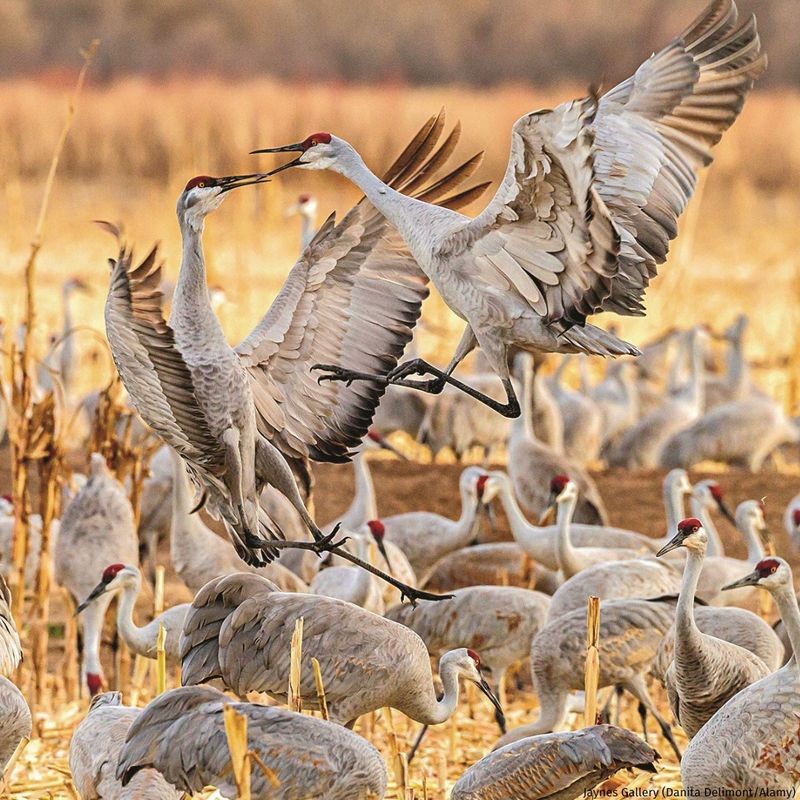
The stark, arid beauty of desert oases now hosts an unusual visitor: the Sandhill Crane. These birds, synonymous with wetlands, are finding solace in these isolated water sources amid endless sands.
The sight of their elegant forms reflected in oasis waters creates a mesmerizing scene. Locals and tourists alike marvel at this unexpected natural phenomenon.
While the reasons remain a mystery, some researchers believe these stops might serve as crucial rest points during long migrations, providing needed respite and resources. Their presence adds an intriguing layer to the desert’s allure.
Wind Farms
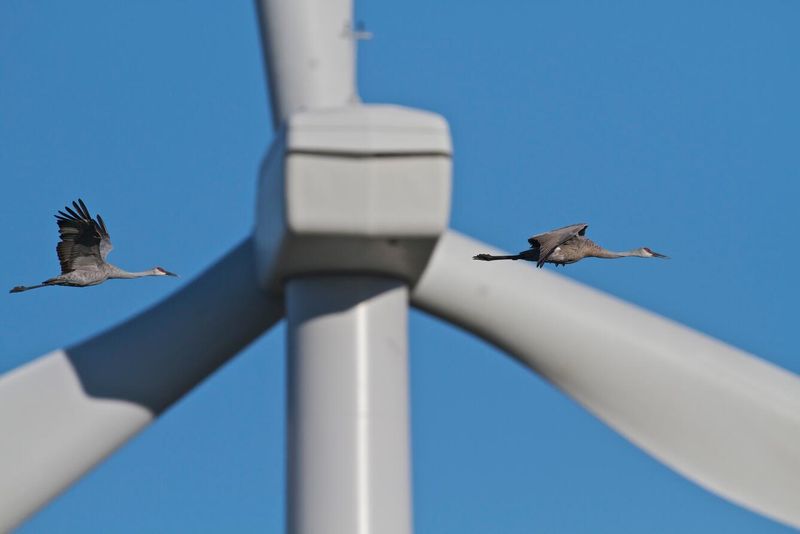
Amidst the gentle hum of wind turbines, Sandhill Cranes have been observed, gracefully navigating these modern landscapes. Their presence near these green energy structures is both surprising and symbolic.
This interaction raises questions about the impact of renewable energy developments on wildlife. Cranes seem to coexist peacefully with these towering giants, even as debates continue about their environmental implications.
Are they drawn by the open space or the windswept currents? Either way, their coexistence with renewable energy symbolizes a harmonious blend of nature and innovation.
Golf Courses
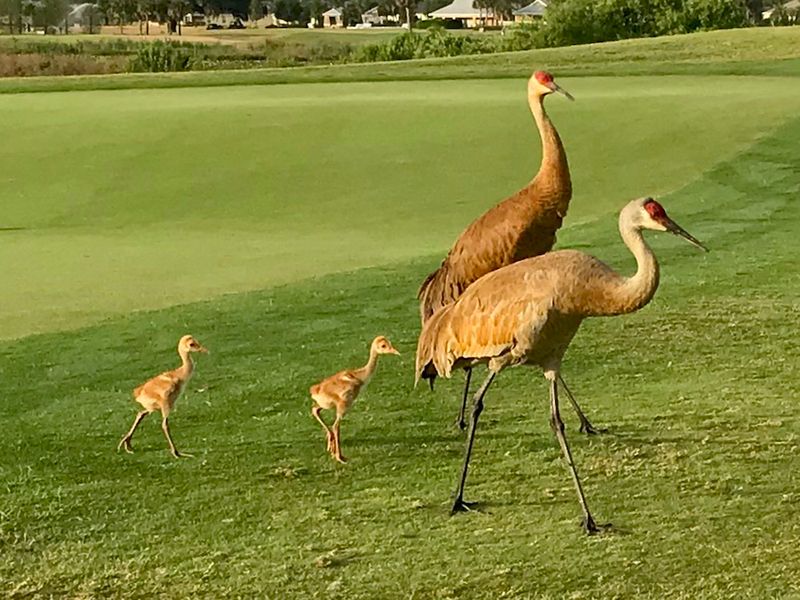
On manicured green expanses, shared with golfers, Sandhill Cranes occasionally wander. These elegant birds, striding across fairways, create a picturesque, if unexpected, scene.
Golfers often pause in their game to admire these feathered visitors, whose presence adds a touch of grace to the sport. The cranes’ preference for these landscapes might stem from the combination of open space and accessibility to water hazards.
These unintended visitors have become a cherished part of the golfing experience, blending the game with nature’s beauty in an unexpected partnership.
Coastal Beaches
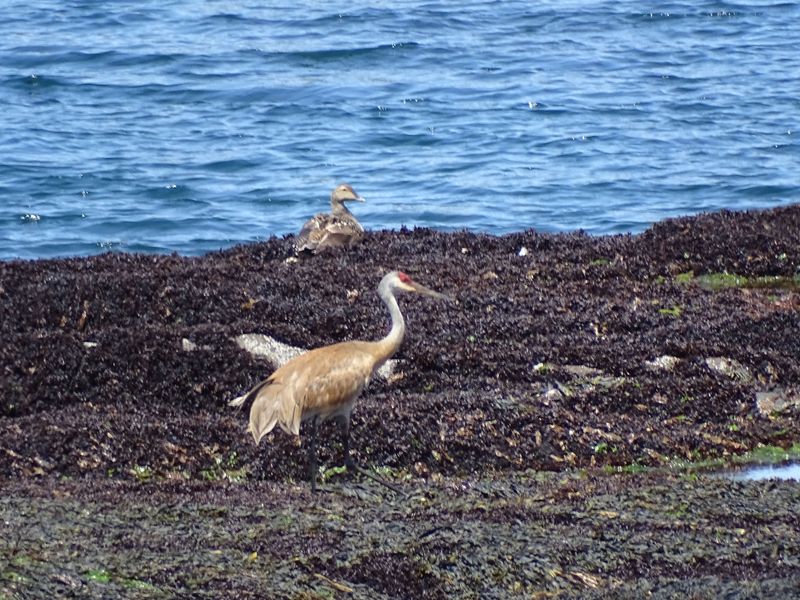
The tranquil stretch of coastal beaches is now occasionally graced by the statuesque presence of Sandhill Cranes. Their tall silhouettes against the ocean waves offer a breathtaking spectacle.
These cranes, traditionally associated with inland waters, have begun exploring marine environments. Observers are captivated by their elegant poise as they navigate sandy shores.
This move to coastal areas hints at their adaptability, possibly driven by changing climates or search for new feeding grounds. Their beachside presence adds a majestic touch to seascapes, inviting reflection on nature’s adaptability.
Suburban Yards
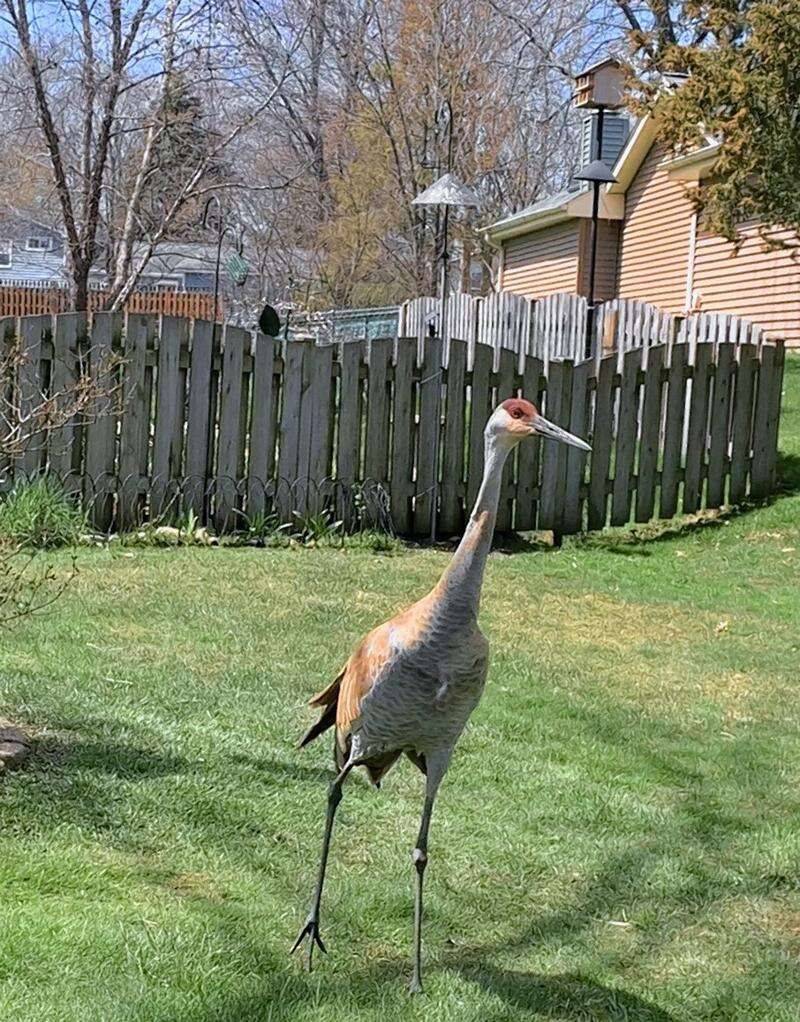
In quiet suburban neighborhoods, the graceful Sandhill Cranes have started appearing in residents’ backyards. These unexpected guests, often seen pecking at garden seeds or strolling across lawns, add a wild touch to everyday life.
Homeowners are enchanted by their elegant demeanor, finding joy in these serene visitors. Their presence in suburbs raises questions about habitat shifts and human impact on wildlife.
Perhaps they’re driven by the search for food or refuge from busier habitats. Whatever the reason, their appearance enriches suburban tranquility with nature’s gentle charm.
Airport Runways
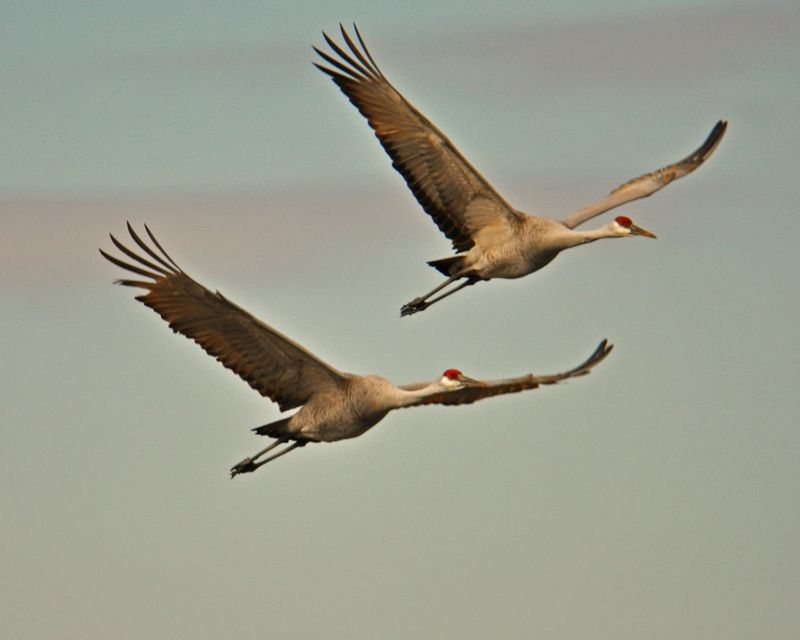
Amidst the hustle of airport activity, Sandhill Cranes have been spotted, seemingly undisturbed by the noise and bustle. Their graceful strides across runways provide an unusual juxtaposition.
Airport staff and travelers alike are often taken aback by these birds’ presence in such a high-traffic area. Their appearance prompts discussions on aviation safety and wildlife management.
Whether drawn by the expanse or the curiosity of flight paths, their runway adventures offer a unique perspective on nature’s interaction with human innovation.
Mountain Meadows
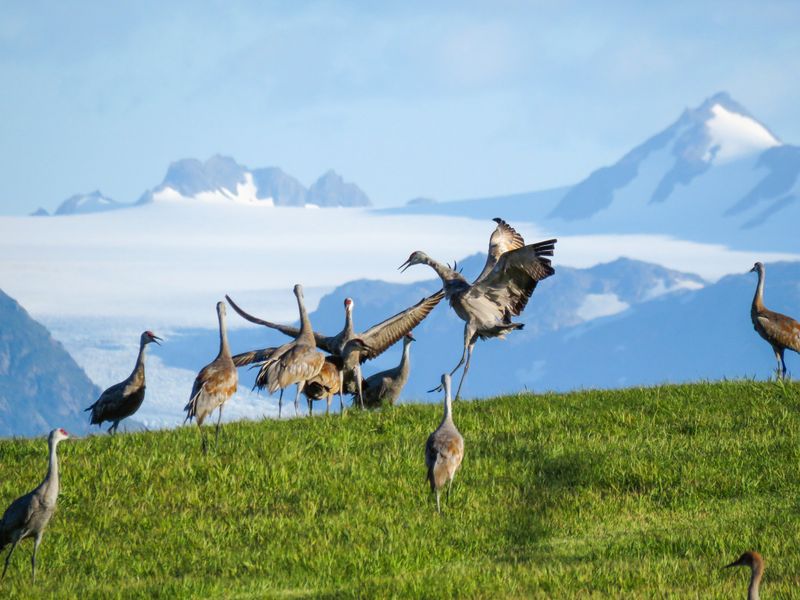
In the serene beauty of mountain meadows, Sandhill Cranes have been discovered, foraging amongst the wildflowers and grasses. Their presence here, amidst soaring peaks, is as unexpected as it is enchanting.
The cranes’ affinity for these high-altitude areas suggests a surprising adaptability. Hikers and nature enthusiasts often encounter these birds, adding a magical element to their outdoor experiences.
This highland habitat offers a fresh perspective on crane behavior, highlighting their resilience and capacity to thrive in diverse environments.
Abandoned Factories
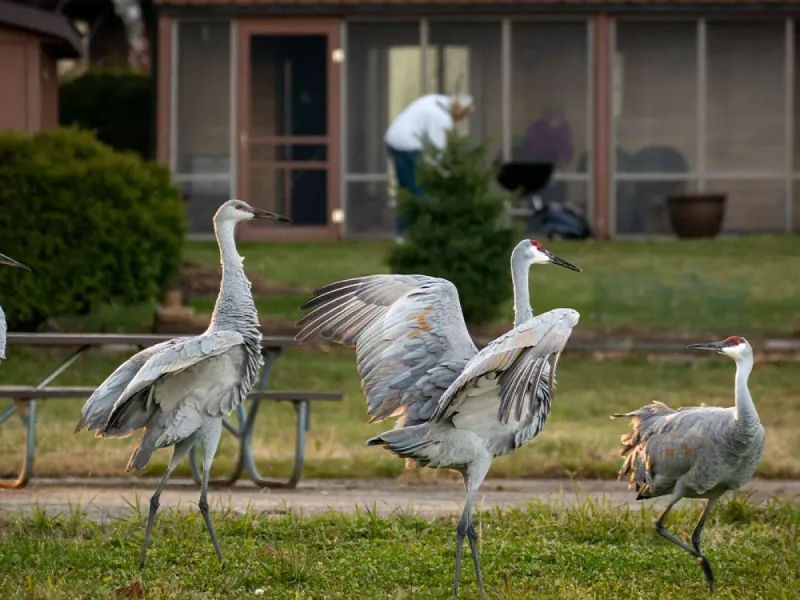
In the haunting silence of abandoned factories, Sandhill Cranes have found unlikely sanctuaries. These industrial relics, with their rusting machinery and echoing interiors, now host avian life.
Observers are fascinated by these birds’ choice of nesting sites, which juxtaposes nature with human discard. This adaptation raises questions about habitat loss and resilience.
As cranes make homes among forgotten industrial landscapes, they challenge perceptions of wilderness, finding beauty and life amidst decay.

